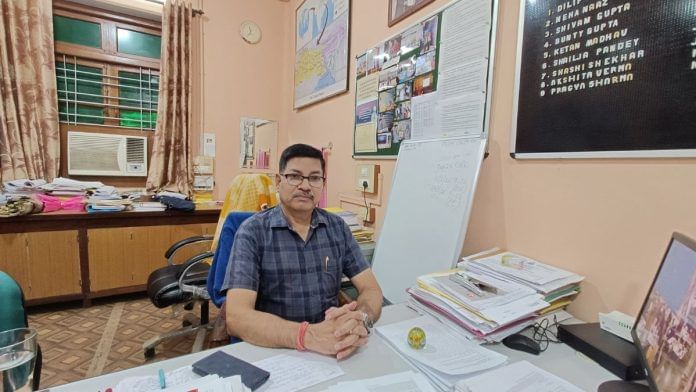Varanasi: For more than two decades, the Ganga River has been a laboratory for professor Jitendra Pandey. From Gomukh to Ganga Sagar, he has studied the entirety of the river’s 2,500 km-long path.
Now, for his pioneering work on the river’s resilience to pollution and climate change, he has received international recognition from the American Geophysical Union (AGU). Pandey has been invited by the organisation to deliver the prestigious Sir Stephen Schneider Lecture.
“It is a special honour to be the first Asian scientist to receive this recognition. With this honour comes a deeper duty to bridge science and policy, and to selflessly serve in the spirit of eternal duty for our planet’s resilience,” said Pandey, who is a professor of environmental sciences at the Department of Botany, Banaras Hindu University (BHU).
He is the first person from the field of biological science to receive the distinction.
The annual lecture honours the life and work of renowned climatologist Stephen Schneider. Every year, one scientist is invited to deliver the lecture, and in December, Pandey will deliver his talk, titled Towards a Mechanistic Understanding of Changing Riverine Biogeochemical Cycles Under Climate Change Scenario. It’s not just a personal milestone, but a global acknowledgement of India’s contribution to the field of river ecology.
“The recognition I have received is for the research I have done on Ganga, especially on the river’s response and resilience to pollution and sedimentation,” said Pandey, sitting in his room in BHU’s Botany Department, full of maps of the Ganga basin and research documents.
His journey with Ganga began in childhood. He had a religious connection with the river back then, but now he sees it as a part of the global climate.
Pandey has a specialisation in Ganga river ecology, climate change, atmospheric deposition, plant biology, and organic farming.
“Professor Pandey has worked extensively on River Resilience Paradigms with eutrophy, heavy metal pollution, nutrient enrichment and benthic community shifts in large rivers such as the Ganga River,” read his description on the AGU website.
Some earlier recipients of the honour include Peter Henry Gleick, senior fellow at Pacific Institute, Alan Robock, professor at Rutgers University, Michael Mann, professor at the University of Pennsylvania, and Stephen Schwartz, professor at Stony Brook University.

Pandey’s tryst with the Ganga
Pandey never forgot his bath in the Ganga three decades ago in Varanasi. It led him to research this river system, and now he is one of the leading scholars on the Ganga in India.
“I had many rings on my finger, and during the bath, I felt that rings fell off. But when I lifted my hands, all the rings were there,” said Pandey. What he experienced was due to the turbidity of the water—a measure of the water’s haziness due to its suspended particles. An increase in a water body’s turbidity can deteriorate its health.
The encounter pushed him to study the Ganga.
Pandey started researching the Ganga when he became a Reader at BHU in 2005. The same year, he established the Ganga River Ecology Research Laboratory at the botany department. Around 14 students have completed their PhDs under his guidance on subjects such as atmospheric deposition on the river and carbon fluxes.
Before he joined BHU, Pandey was an assistant professor at ML Sukhadia University in Udaipur, where he was a PhD guide for seven students.
However, Pandey’s connection to BHU runs deeper. In 1981, he joined the university as a student for a bachelor’s degree in science. He spent nine years at the campus, also completing his master’s and PhD.

His professors still remember him when he was a student. “I taught him and his wife in his MSc days. He was a sincere student and later became my colleague at the same department,” said RS Upadhyay, professor and former head of the botany department.
According to Upadhyay, Pandey’s papers on Ganga are highly detailed. “His research work on Ganga is extensive and consistent,” he said.
Once the lecture had been announced, BHU’s X handle and website shared the news with ‘#MakingBHUProud’.
Pandey’s colleague, Ravi Asthana, praised his work on the Ganga.
“Pandey and his team trace Ganga’s health from Haridwar to Ganga Sagar and study the impact of heavy metals, carbon load, and sedimentation. He is hard–working and dedicated toward his research,” said Asthana, professor and former head of the botany department.
For the last four decades, the Indian government has been trying to clean the Ganga. The effort started in 1986 under the Ganga Action Plan (GAP). “That programme did not succeed much,” said Pandey.
A combination of inadequate sewage treatment capacity, insufficient political commitment, and a lack of local cooperation—worsened by continuous discharge of sewage and industrial waste—was responsible for the programme’s lack of success.
When Modi came to power in 2014, he integrated GAP into the Namami Gange Programme with an initial budget of Rs 20,000 crore.
Pandey said that despite the infrastructure and money spent in the last decades, the health of the Ganga continues to deteriorate. “Despite the sewage treatment plants, we do not have the capacity to treat all the sewage,” he said. Domestic sewage and industrial waste constitute major pollutants in the river.
His team noted that during the Covid-19 pandemic, the water quality of the Ganga improved—even as sewage was being discharged as normal. “It was clear that industrial waste had significantly impacted the Ganga’s water,” said Pandey.
On the basis of his two-decade research, Pandey advocated for increasing the flow of river water. “This is a tool that can address many river health issues. Increasing the flow will reduce the concentration of pollutants, and it will also increase the oxygen content,” he said.
Study on Ganga’s resilience
Pandey’s globally recognised work underscores the vital link between river health and the planet’s ecological balance.
“I have studied the response and resilience of the Ganga River from the toxic pollutants that enter the riverine system. The study on this started for the first time in our lab in BHU,” Pandey said.
The Ganga River has a self-cleaning property, but it is deteriorating. The question for Pandey was, for how long the river would continue to clean its water.
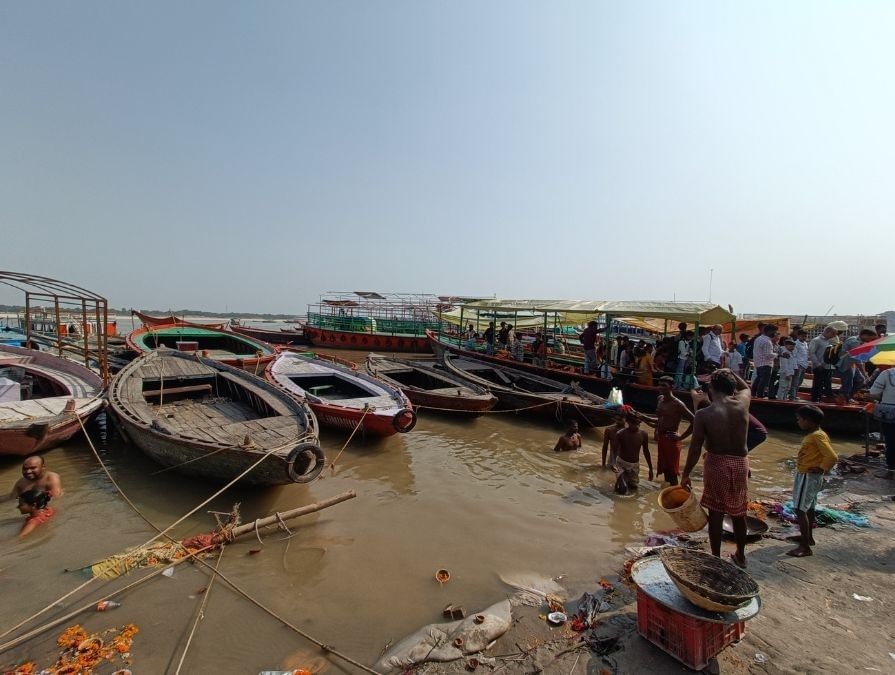
“For checking the capacity, we created the River Ecosystem Resilience Index,” said Pandey. According to him, it has a simple meaning: how long the river system takes to return to its original state, and what the level is beyond which it can’t recover.
Pandey, with his PhD student Deepa Jaiswal, published a research paper in 2021 titled “River ecosystem resilience risk index: A tool to quantitatively characterize resilience and critical transitions in human-impacted large rivers”.
It’s the first index to measure resilience capacity for river systems. All ecosystems have tipping points at which the system shifts abruptly.
According to Pandey, resilience indices are available for terrestrial ecosystems. But there was no index he could use to identify the resilience capacity of the Ganga.
“We can’t identify the health of the river solely from changes in water quality. Then we studied the response, studying dissolved oxygen deficit, denitrification, and measuring metal pollutants,” he said.
In 2021, the National Academy of Sciences, India (NASI) awarded Jaiswal with Young Scientist Platinum Jubilee Award 2021 for building the river ecosystem resilience risk index and ecological response index.
Pandey is a lifetime member at the Indian Science Congress Association, an elected member at the New York Academy of Sciences, and a fellow at the Indian Association of Aquatic Biologists. In 2023, he was elected as a fellow at NASI.
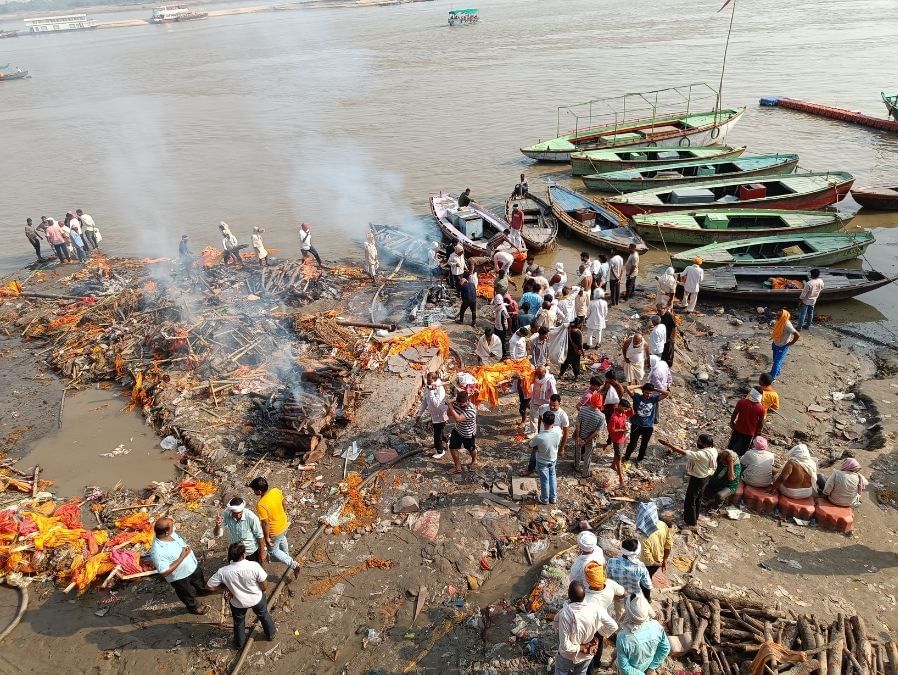
Across India, researchers are studying different aspects of Ganges, whose secret lies in its geochemical properties.
“The Ganga River is no longer the self-cleansing force it once was. Its silicate-rich water, and less so, its myriad bot-like bacteriophages, are fading as the human stain deepens. Restoring the river isn’t just a matter of environmental conservation or a public health imperative. It is critical that this ceaseless engine of carbon capture isn’t lost to modern neglect,” wrote Pranay Lal, a biochemist and natural history writer.
Haridwar to Howrah
At the ground floor of the botany department, five students were analysing the sample they collected from the Ganga basin from Haridwar to Ganga Sagar in a large hall full of different soil samples, maps, and papers.
A blackboard in the laboratory shows 11 names—the researchers on Pandey’s team. The professor has divided the river into different stretches from its origin through the 2,500 km of its journey, which ends in West Bengal.
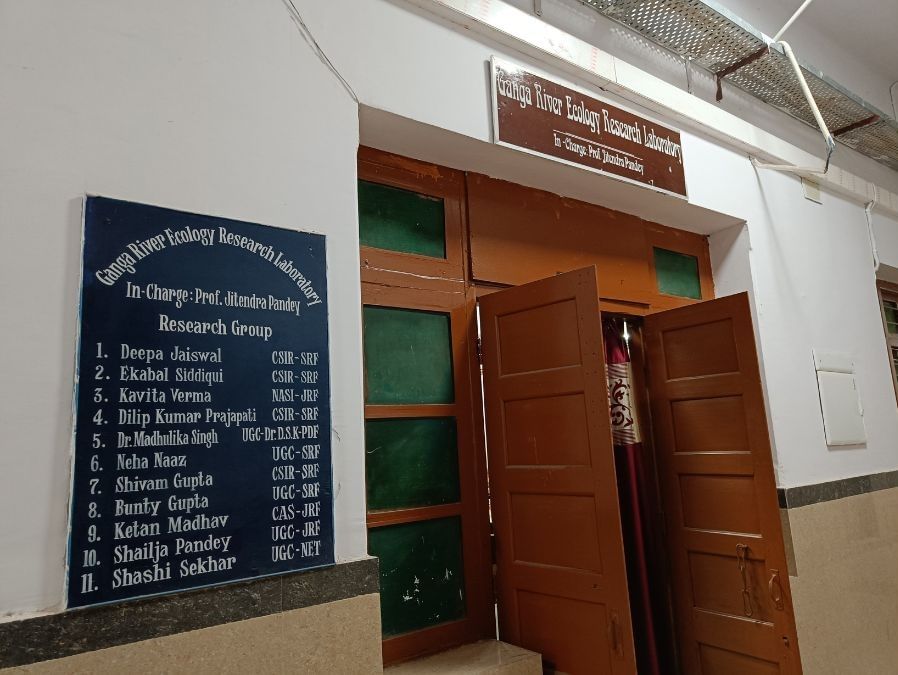
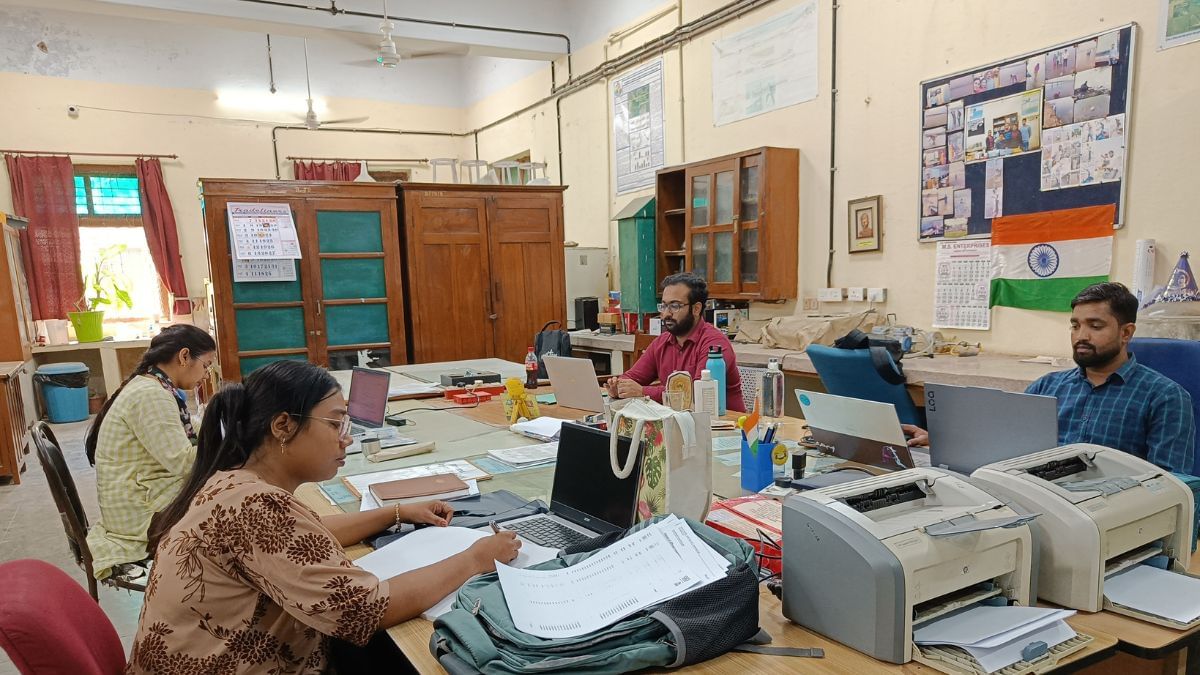
“Each stretch is covered by different students, so that there has been no repetition in the research and different facts will be unearthed,” said Pandey.
Shivam Gupta, a research scholar working under Pandey, has been studying the lower stretch of the Ganga in West Bengal for the past five years. “My work focuses on the Ganga’s health at Howrah and Ganga Sagar, especially the Sundarbans region,” said Gupta. He is analysing how the river’s ecology is changing with the increase of salinity in the region.
Saline water continuously mixes with the river’s freshwater in the Sundarbans, with a high concentration of heavy metals such as mercury and lead. “That water, when used by people for irrigation, impacts their health,” he said.
With increasing salinity and sea level rise, the area occupied by mangroves is also decreasing.
Ketan Madhav’s work focuses on the stretch between Kanpur to Varanasi, an area of around 518 km. He started his research in 2021.
“It’s not just BHU, but a proud moment for the entire country. Our work addresses a global problem,” said Madhav.
According to Pandey, rivers are central to the global ecosystem.
“Rivers connect to the regions, coastal areas, and directly to the ocean. So, in a way, it’s a global cycle: carbon moves up from the ocean, then into the river, then into the plants, then back into the river,” he said.
(Edited by Prasanna Bachchhav)



